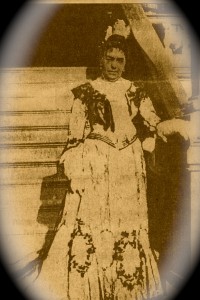I wrote the story in 1999
This is the story of Jane Lathrop Stanford and the mysterious circumstances surrounding her death in the early 1900s.
Part 10
While the autopsy was completed, the chemist’s report was inexplicably delayed. Suspicion arose when Honolulu’s High Sheriff William Henry cabled San Francisco police with a message that “the bottle of bicarbonate of soda contained 43 grams, in which there were 662 grains of strychnine.”
Then came a bombshell. High Sheriff Henry denied he was the author of the cable and did not know what was in the still unreleased chemist’s report.
After further delay, there was an inquest featuring a parade of witnesses. Bertha Berner, who was a suspect, remained in her room while testifying. Wearing a white, long-sleeved dress with a high collar, she had prepared herself well. As she described Mrs. Stanford’s last moments she clasped a handkerchief with her long, slender fingers adorned with a “dozen rich rings.”
While the autopsy surgeons pointed to strychnine as the cause of death, the chemists said they found only one-half a grain of strychnine in the 43 grains of bicarbonate of soda.
The Honolulu Coroner’s Jury issued its own verdict: “Mrs. Stanford came to death by poisoning, strychine having been given to her with murderous intent by a person or persons unknown to the jury.”
The verdict set the San Francisco police into motion as detectives scoured the Nob Hill mansion and the Palo Alto Farm for traces of strychnine. None was found. Strchnine had to be registered at the point of purchase and local pharmacists were interviewed. If the police could not trace the deadly poison to a purchaser, officials said they would have insufficient evidence for a conviction.
Detectives focused on Mrs. Stanford’s servants, subjecting them to the “third degree” in a darkened room on the first floor of the Nob Hill mansion. In that room police heard accounts of petty rivalry, jealousy and intrigue.
Albert Beverly and Elizabeth Richmond, the dismissed butler and maid residing in San Mateo, underwent two hours of “sweating” at San Francisco police headquarters. Nothing new was learned.
After being shadowed and harassed by police, Elizabeth Richmond broke down and admitted, “We all knew what was going on about my old mistress,” referring to the household graft. She accused Bertha Berner of sharing in the profits and of exerting undue influence over Mrs. Stanford.
But Bertha retained the full confidence of the entire Stanford estate. Bertha and Ah Wing were loyal, and not greedy, since they were always adequately recompensed, it was said.
Following Mrs. Stanford’s death, the Stanford team seemed anxious to conclude that Mrs. Stanford was not murdered.
How did Dr. David Starr Jordan, a medical doctor, and the president of Stanford University, deal with the presence of strychnine in the bicarbonate of soda? He contended the presence could have been a pharmacist’s error, or mixed with the soda as a tonic. As Dr. Jordan familiarized himself with Mrs. Stanford’s symptoms, he concluded she was not poisoned because the strychnine found did not exceed “a medicinal dose.” She died a natural death, he said.
The natural death theory gained momentum as San Francisco police were unable to uncover more than details “relating to certain jealousies and trouble between Mrs. Stanford’s servants.”
Agreeing that the amount of strychnine found was insufficient to kill Mrs. Stanford, the police closed the case. Mrs. Stanford’s passing was classified as a natural death caused by heart disease, brought on by an acute attack of indigestion.
At the reading of Mrs. Stanford’s will, Bertha Berner received $15,000, and Ah Wing received $1,000. Bertha retired to Menlo Park; a personal account of her life with Mrs. Stanford was published by the University Press in 1935.
But Mrs. Jane Lathrop Stanford’s death remained controversial as some of her friends continued to believe she had been poisoned. They also believed the culprit worked secretly and alone, and his or her identity would never be know.
———-
Finis

